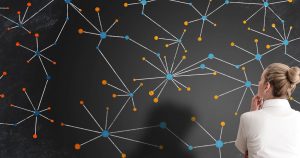Alzheimer Disease – Ayurvedic Herbal Treatment
4 min read[ad_1]
Alzheimer disease (AD) is a neurodegenerative disorder involving cognitive and behavioral impairment. This condition is chronic and progressive, and severely impairs day to day activities, as well as social and occupational functioning. It affects the hippocampus, a part deep within the brain which helps to encode memories, as well as parts of the cerebral cortex which are involved in thinking and making decisions. Structural changes may begin to appear in the brain several decades before actual appearance of signs and symptoms.
AD patients usually go through 4 clinical stages. In the first, preclinical stage, the hippocampus and nearby brain areas get affected and start shrinking; however, patients are usually clinically unaffected. In the next stage known as mild AD, the cerebral cortex too gets affected, giving rise to symptoms such as memory loss; getting lost; difficulty in doing daily activities, handling finances, making judgments; loss of spontaneity and initiative; and mood and personality changes.
The subsequent third stage is moderate AD, in which brain parts are involved which control language, reasoning, sensory processing and conscious thought. This causes symptoms such as increased memory loss and confusion; shortened attention span; difficulty with language, learning, logical thinking, recognizing people and organized movement; increased mood and personality changes; and repetitive actions and statements. The fourth and final stage is severe AD, in which there is significant atrophy of affected brain parts, because of which patients fail to recognize close or family members; become completely dependent; and lose all communication and sense of self. There may be additional symptoms like weight loss, difficulty in swallowing, incontinence, skin infections, convulsions, and increased sleeping.
AD pathology is primarily made up of senile plaques (SPs) and neurofibrillary tangles (NFTs). Plaques are formed by the accumulation of dense, mostly insoluble deposits of a protein known as beta-amyloid (Ab) along with some cellular material surrounding neurons. Ab is a part of a larger protein known as amyloid precursor protein (APP), which is associated with the neuron cell membrane. Degenerative processes and enzymes speed up the formation of Ab fragments, which clump together outside the cell and are known as SPs. Whether SPs are the cause or byproduct of AD is as yet unclear.
Healthy neurons have an internal communication system known as microtubules, which allow to and fro movement of nutrients and molecules. A protein known as tau binds to the microtubules and stabilizes them. AD causes chemical changes in tau which in turn bind together and cause tangling, disintegration and collapse of the microtubular system, leading to disorganized structures known as NFTs. These cause disruption in the communication between neurons, gradually leading to cellular death.
Currently, modern medicine uses medications to modulate neurotransmitters, either acetylcholine or glutamate, in order to provide symptomatic treatment for AD. Antidepressants, anxiolytics, antiparkinson medications, beta blockers, antiepileptic drugs and neuroleptics are used to treat behavioral symptoms like depression, agitation, aggression, hallucinations, delusions, and sleep disorders. Mental activities are employed to improve cognition and slow down deterioration. Mild to moderate cognitive decline can be reversed using diets which reduce carbohydrate consumption and allow for increased consumption of fruits, vegetables, and non-farmed fish. Such diets can be supplemented using graded exercise programs, stress reduction techniques, and supplementation with vitamin D3, fish oil, coenzyme Q-10, melatonin, and methylcobalamin. Physical activity, exercise, cardiorespiratory fitness, and a Mediterranean diet may have a preventive effect.
While there is currently no cure for severe AD, Ayurvedic herbal treatment can be utilized judiciously with significant results. Ayurvedic principles for AD treatment include detoxification, treatment of chronic infection and inflammation, providing specific nutrition for degenerating tissues, opening up of damaged and blocked nutritional pathways, modulating metabolism at the general level as well as cellular level, and repair of reversible damage. These actions are performed either in a step-ladder fashion or concurrently, depending upon the clinical presentation, severity, and specific requirements of each individual.
Ayurvedic herbomineral medicines need to be given in high doses for several months in order to reverse AD pathology. Such medicines can be periodically rotated in order to continue providing therapeutic benefit while minimizing the chances for adverse effects. These are supplemented with herbs to continue mild detoxification, treat inflammation and provide nutrition. While these medicines are administered orally, there are other treatment modalities also concurrently in use, known in Ayurveda as Panchkarma (five procedures).
Courses of medicated enemas (basti) and medicated nasal drops (nasya) can bring about significant improvement. A special procedure known as “Shiro-Basti” is used, in which warm Ayurvedic medicated oils are poured onto the scalp within special, elongated skull caps for specific durations. Generalized skin massage and fomentation with medicated steam also provide good results. Exposure to sunlight (known in Ayurvedic terminology as “aatap sevan”) helps AD people to remain active in the day time and sleep well at night. The consumption of various medicated oils and ghee (clarified butter) is also known to provide benefit. Severe depression and psychotic symptoms can be treated by administering fine, dry herbal powder via nasal tubes or cannulae, and also by inhaling medicated steam.
Since most of these procedures and oral treatments require the compliance of people affected with AD, it is advisable to commence Ayurvedic treatment at the earliest possible. This can ensure that patients get the maximum possible therapeutic benefit in the form of decreased symptoms, better quality of life, and a general reduction in morbidity and mortality.


![The strategic approach to AI in the enterprise 2 Top 10 Leading Countries in AI Research and Technology [current_date format=Y]](https://cryptheory.org/wp-content/uploads/2023/08/ai-strategie-300x193.jpg)



